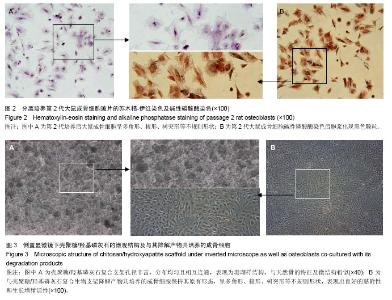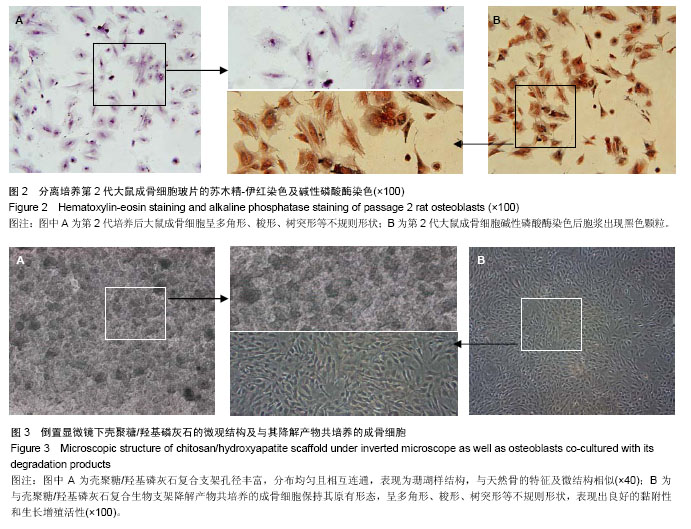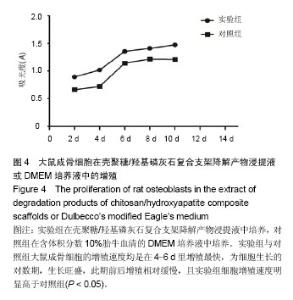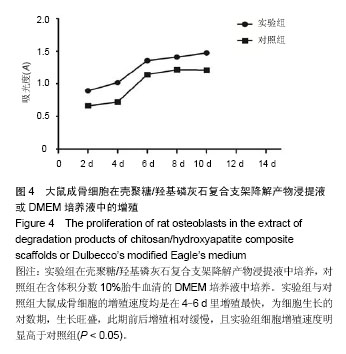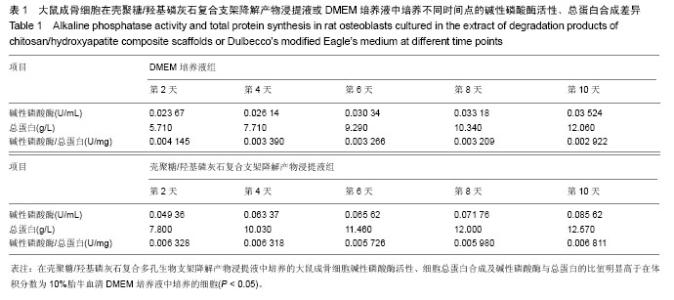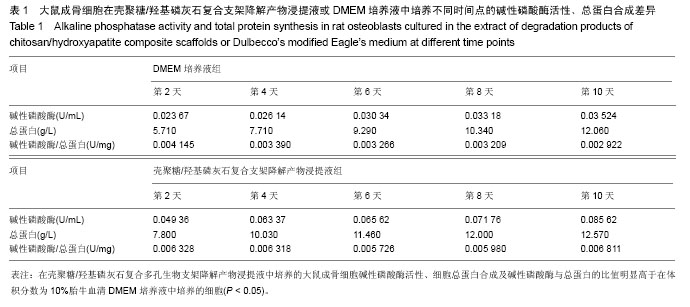| [1] 刘鹏,王东,孙海钰,刘亮,等.胶原-纳米羟基磷灰石复合支架的细胞相容性[J].中国组织工程研究与临床康复,2011,15(42): 7831-7834.
[2] Liu LS,Thompson AY,Heidarun MA,et al.An osteoconductive collange/hyaluronate matrix for bone regeneration. Biomaterials. 1999;20:1097.
[3] 葛建杰,王沫学,高夕宁,等.羟基磷灰石义眼座植入安装活动性义眼临床应用及疗效分析[J].眼外伤职业眼病杂志,2009,31(10): 786-788.
[4] 刘彬,安丽,朱博,等.35例改良式羟基磷灰石义眼台一期植入术临床应用[J].昆明医学院学报,2010,31(2):128-129.
[5] 凌中华,赵建宁.羟基磷灰石涂层髋关节假体的研究与应用[J].中国组织工程研究,2012, 16(37):7322-7326.
[6] 武慧明.非骨水泥型人工全髋关节的临床应用[J].中国煤炭工业医学杂志,2011, 14(5):687-688.
[7] 梁一雷,苏武.脱细胞真皮基质与羟基磷灰石在颌骨部分缺损中的临床应用[J].吉林医学, 2012,33(23):5052-5053.
[8] 何玲,于波,王慧丽,等.甲壳素/壳聚糖生物抗菌敷料在皮肤组织工程中的应用[J].中国组织工程研究与临床康复,2010,14(38): 7149-7152.
[9] 袁丹波.壳聚糖抗菌生物医用膜在烧伤创面中的临床应用[J].微生物学免疫学进展, 2012, 40(1):35-37.
[10] 劳丽春.药物缓释载体材料类型及其临床应用[J].中国组织工程研究与临床康复,2010, 14(47):8865-8868.
[11] 徐小燕,刘涛涛,郑军,等.壳聚糖/羟基磷灰石骨修复材料的研究进展[J].材料导报,2012,26(8):102-106.
[12] 李晓峰,赵劲民,苏伟,等.大鼠成骨细胞的原代培养和鉴定[J].中国组织工程研究与临床康复,2011,15(6):990-994.
[13] 陈强,夏天,叶哲伟,等.优化组织块法体外培养新生SD大鼠原代成骨细胞与鉴定[J].安徽医科大学学报,2012,47(9):1124-1127.
[14] Sikavitsas VI,Temenoff JS,Mikos AG.Biomaterials and bone mechanotransduction. Biomaterials.2001;22(19):2581-2593.
[15] Perry CR.Bone repair techniques,bone graft,and bone graft substitutes. Clin Orthop Relat Res.1999;(360):71-86.
[16] Hench LL,Polak JM.Third-generation biomedical materials.Science.2002; 295(5557):1014-1017.
[17] 雷万军,李秉哲,曹谊林,等. 组织工程骨和外科人工植入物的仿生技术研究[J].中国组织工程研究与临床康复,2008,12(14): 2721-2726.
[18] Bauer TW,Muschler GF.Bone graft materials. An overview of the basic science. Clin Orthop Relat Res.2000;(371):10-27.
[19] 付志厚,王爱民.组织工程骨修复兔股骨髁骨缺损成骨效应的核素骨显像定量评价[J].中国组织工程研究与临床康复,2007, 11(23):4500-4503.
[20] Zhu X,Eibl O,Scheideler L,et al.Characterization of nano-hydroxy apatite/collagen surfaces and cellular behaviors. J Biomed Mater Res A.2006;79(1):114-127.
[21] 郭言恩,王峰,赵萍,等.纳米羟基磷灰石/壳聚糖复合材料的制备及发展趋势[J].中国组织工程研究与临床康复,2010,14(3):500.
[22] 张利,李玉宝,魏杰,等.纳米羟基磷灰石/壳聚糖复合骨修复材料的共沉淀法制备及其性能表征[J].功能材料,2005,36(3):441.
[23] 张梅霞,靳安民,闵少雄,等.仿生型生物玻璃/胶原蛋白/磷脂酰丝氨酸/透明质酸复合支架修复兔桡骨缺损[J].中国组织工程与临床康复,2006,10(29):59-62.
[24] 王文良,张华亮,关静,等.壳聚糖/羟基磷灰石支架修复骨软骨缺损的实验研究[J].中国矫形外科杂志,2008,16(20):1579-1583.
[25] 吕彩霞,姚子华.羟基磷灰石/壳聚糖复合材料研究进展[J].化工进展,2006,25(7): 755-759.
[26] 孟德营,刘金华,姜丽娜.羟基磷灰石/壳聚糖生物复合材料研究进展[J].山东轻工业学院学报,2009,23(1):33-37.
[27] 徐培,陆钰,吴海珍,等.纳米羟基磷灰石/壳聚糖支架材料复合大鼠成骨细胞培养的实验研究[J].安徽医药,2011,15(7):814-816.
[28] 王文良,张华亮,初殿伟,等.自体骨髓间充质干细胞复合壳聚糖/羟基磷灰石支架修复兔膝骨软骨缺损[J].中华骨科杂志,2009, 29(1):61-64.
[29] 程浩,张延芳,许巍.新生大鼠成骨细胞原代培养与鉴定[J].中国组织工程研究,2013, 17(41):7199-7204.
[30] 张英,袁月,孙富丽.成骨细胞胞内胞外碱性磷酸酶含量比较[J].中国医科大学学报, 2011, 40(10):874-876,884.
[31] Marinucci L,Lilli C,Baroni T,et al.In vitro comparison of bioabsorbable and non-resorbable membranes in bone regeneration.J Periodontol.2001;72(6):753-759. |
